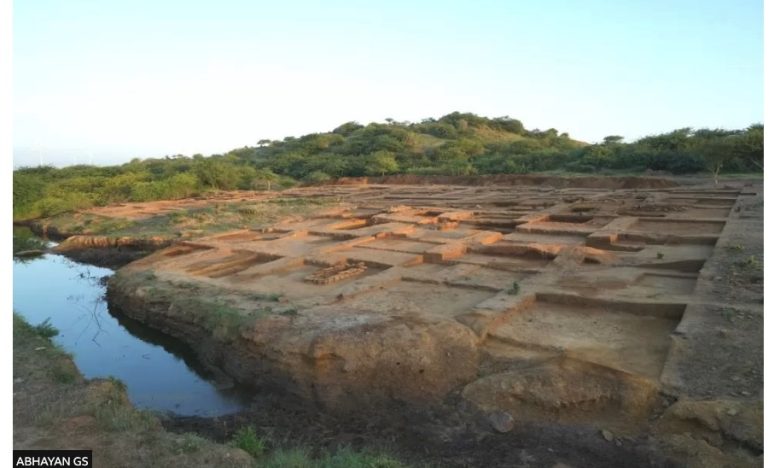INDIA, September 6, 2023 (BBC): In 2019, as scientists embarked on excavating a mound of sandy soil near a remote village in the sparsely populated Kutch region, situated not far from Pakistan in India’s western state of Gujarat, they had no inkling of the surprise that lay in store for them. “When we began digging, we thought it was an ancient settlement. Within a week, we realized it was a cemetery,” says Rajesh SV, an archaeologist with the University of Kerala, who led the search. Three excavation seasons – involving more than 150 Indian and international scientists – have been conducted so far at the 40-acre site. Researchers now estimate the presence of at least 500 graves of the Indus society, one of the world’s earliest urban civilizations. (Some 200 of these graves have been excavated.)
Also known as the Harappan civilisation, named after its first city, this society – austere farmers and traders who lived in walled, baked-brick cities – rose to prominence some 5,300 years ago in what is now north-west India and Pakistan. In a century since the civilization’s initial discovery, researchers have unearthed up to 2,000 sites in India and Pakistan. Scientists reckon the sprawling burial ground near Khatiya village in Gujarat may potentially be the largest “pre-urban” cemetery of the society discovered so far. They believe it was in use for about 500 years, spanning from 3200 BC to 2600 BC, making the oldest graves here around 5,200 years old. “This is a hugely significant find,” says Brad Chase, a professor of anthropology at Albion College, Michigan. “Several pre-urban cemeteries have been discovered in Gujarat, but this is by far the largest – and therefore has the potential to reveal a greater diversity of grave types that will help archaeologists to more fully understand pre-urban society in the region as well as provide crucial context for the other smaller cemeteries that have been previously discovered,” says Prof Chase.
More at source.
https://www.bbc.com/news/world-asia-india-66562257
A daily summary of world news for Hindus and non-Hindus alike

